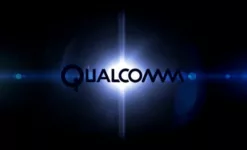This week was Qualcomm’s annual summit in Hawaii, and for once I’m not there, which is kind of a shame because it’s really cold where I live right now. However, on paper, the Qualcomm Oryon processor due next year could be the perfect competitive answer to Apple’s M1/2 if Intel’s coming little core/big core effort is late to market, which seems likely given Intel is undergoing a large layoff.
Oryon is based on Nuvia technology that has been somewhat problematic given ARM is suing Qualcomm for using the technology in what appears to be a suicidal effort designed to cripple this potential Apple competitor. But if launched successfully as expected in 2024, this processor could be a huge game changer. Of course, it will run not only against the latest processors from folks like AMD and Intel but also against some of the coming RISC V parts also expected at that time. ARM’s hostile actions could still cost both ARM and Qualcomm any chance of succeeding which is foolish on ARM’s part given that the license Qualcomm has for ARM does appear to cover the product. There is only one thing worse than suing a large client, and that is losing when you do so. Because of Qualcomm’s relatively strong position, it seems likely ARM is on the wrong side of the fence, both legally and competitively.
Let’s talk about how this coming battle is likely to play out.
Processor Wars
Currently, Apple is the ARM champion for PCs. Its M1/2 effort has been very successful as the company moved from Intel to ARM for its latest PC processors. In general, these processors have been holding up, thanks mostly to Apple’s tightly controlled ecosystem. For Windows-based PCs, X86 and Intel are still kings, though AMD has been beating Intel regularly of late in performance. At the high end, the two companies remain competitive against each other across both mobile and desktop designs while Intel continues to lead on overall design wins. Qualcomm’s current ARM effort, while interesting, is still very small when compared to either AMD or Intel, and its biggest competitive disadvantage comes from using an architecture that lacks performance headroom to run the emulators required to run Windows or Windows apps.
This last is changing as Microsoft moves to create a version of Windows and related apps that will run natively without an emulator, promising ARM performance that will be sharply improved without hurting other advantages like battery life and wireless connectivity where ARM has traditionally had an advantage.
Right now, while Qualcomm’s ARM effort lags in performance significantly, it tends to lead in battery life and connectivity, but those advantages are being addressed by future Intel designs that promise to better shift from low power to high power processing as the need requires and potentially bracket Qualcomm’s more blended effort with better performance when needed and better battery life when that performance isn’t needed.
AMD is largely staying on the performance vector, but the latest laptop I’ve tested, the HP EliteBook 865 G9 got 21 hours battery life for video and light word processing, making me wonder how much more battery life I’d need (this laptop has a 16-inch screen, as well, so it was hardly a stripped-down unit).
In short, as the challenger, Qualcomm will have to execute sharply with Oryon or there is an increasing chance that by the time it’s released, the already entrenched competing parts will be good enough to hold it off. This is one of the problems when trying to penetrate an already defined market with a new technology: You have to be substantially better than the part you are trying to displace to get movement because buyers don’t like taking chances on new technology unless there is a substantial benefit.
As a result, the ill-timed and ill-considered ARM litigation could be enough of a drag on this effort to remove its ability to arrive timely and before Intel renders the effort redundant. Fortunately, Microsoft is on Qualcomm’s side and has the ability to be a kingmaker given Microsoft makes the operating system for these PCs. But Microsoft isn’t stupid. I’ll bet this ARM/Qualcomm litigation has it thinking about hedging its bets because that’s what I’d be doing.
Qualcomm Oryon
Qualcomm Oryon won’t just be for PCs. lt cuts across all of Qualcomm’s platforms that require higher performance: smartphones, cars, mixed reality glasses, and networking solutions. Promising a superior blend of performance and energy conservation, Qualcomm could be, on paper, the perfect choice for an increasing number of applications that don’t want to trade off conservation against performance.
If it can arrive with Microsoft’s strengthened ARM support for Windows, it has the potential to flip itself from an also-ran in the PC space into a real contender. This will require a much higher level of execution from Qualcomm that will be hindered by the ARM litigation. So, the success of this effort is anything but certain.
Wrapping Up:
Oryon is a crucial play for both Qualcomm and ARM. If successful, it could provide a strong foundation for Qualcomm and ARM to move outside of Apple definitively in the PC space and become a true force in the market. But the foolish and seemingly punitive litigation from ARM will significantly hinder this effort which is by no means a sure thing even with ARM’s support. It also slows execution during a time when Intel is suffering through a layoff and would be less able to respond to this threat. In short, the litigation is a gift to both Apple and Intel because it buys them time to come up with better competitive alternatives. If they do, Oryon’s success will be substantially reduced.
I expect this ARM vs. Qualcomm litigation will go down in history as one of the most foolish things ever done and, should ARM fail against a surging RISC V or X86 counter effort, this litigation will likely lead to the list of causes for that failure. Given Apple is taking a hard look at RISC V, ARM’s window to stop this silliness is shrinking rapidly. In the end, if Qualcomm can get around ARM, it has a shot at the title. However, getting around a partner making bad choices is neither easy nor assured, so we’ll have to wait at least another year to see if Oryon can rise to its market disruption potential.








